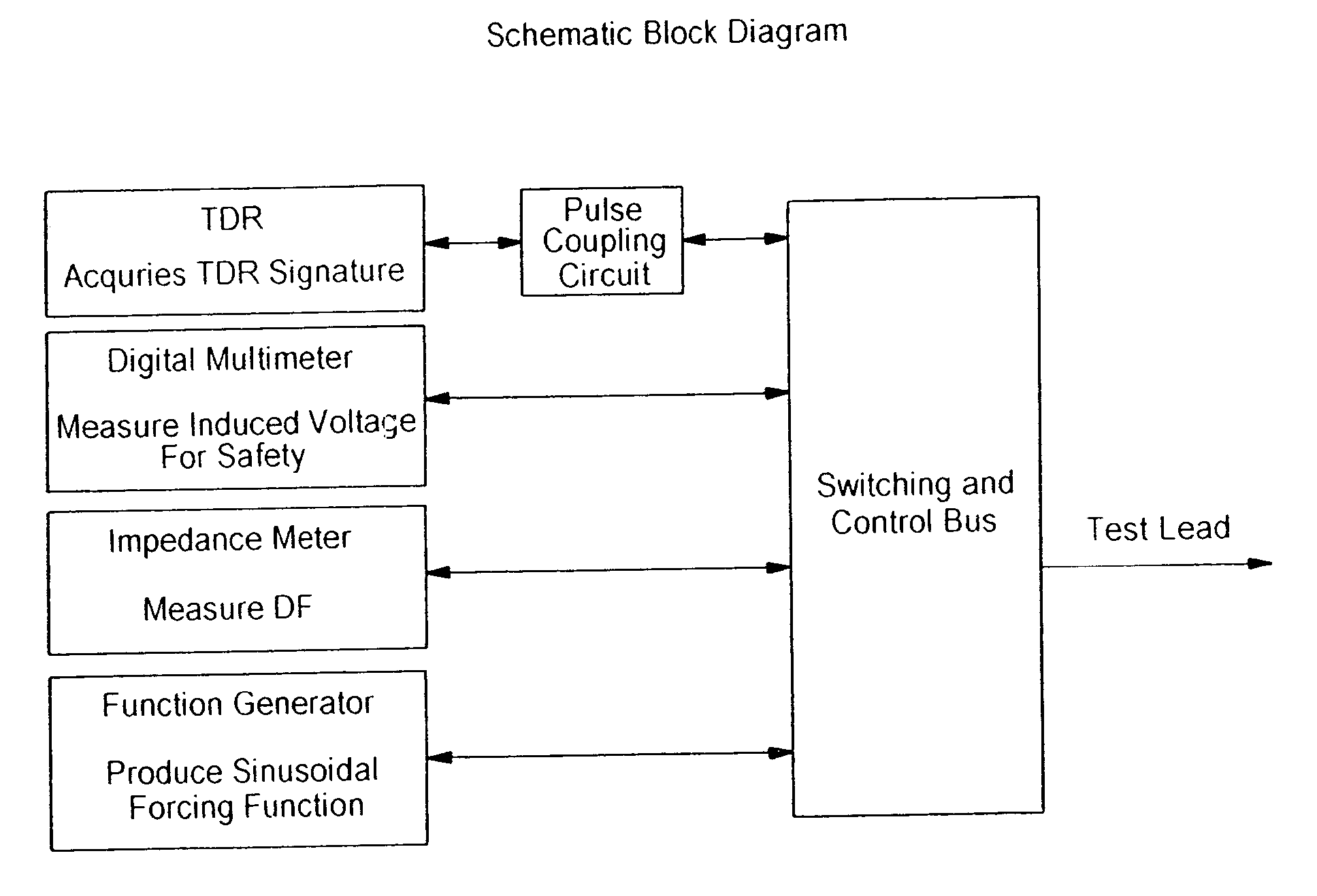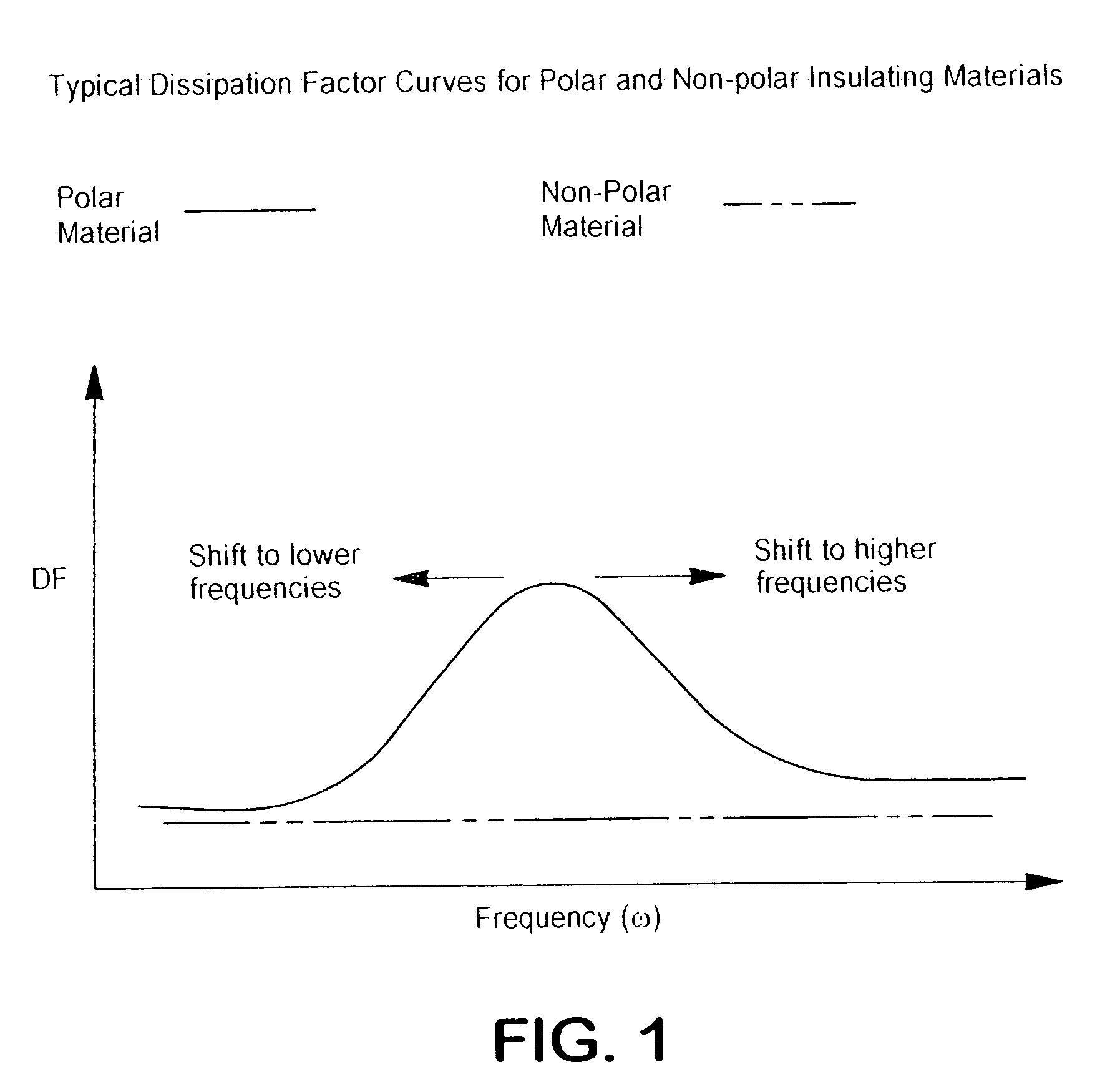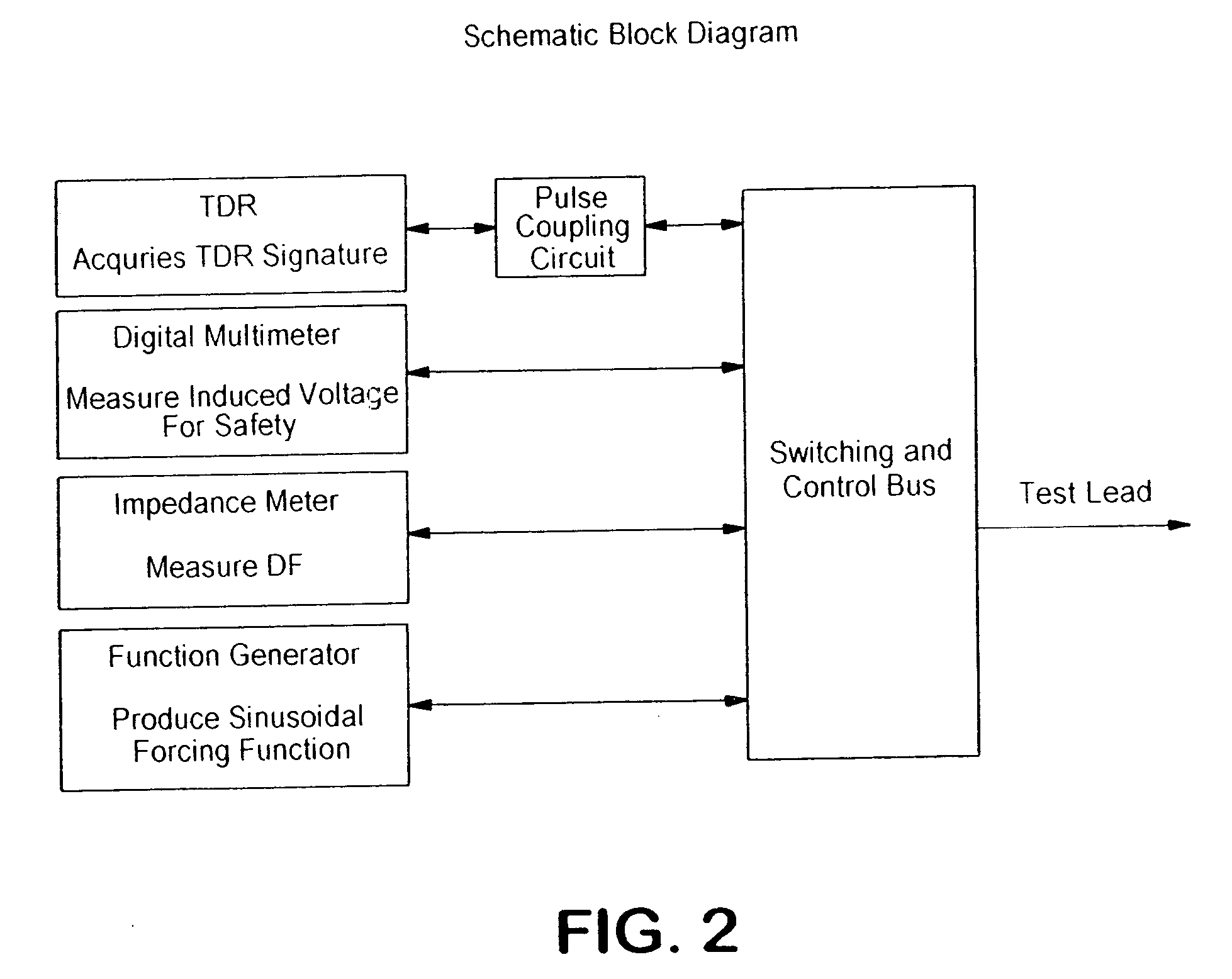Method and apparatus for monitoring integrity of wires or electrical cables
a technology of integrity monitoring and wires, applied in the direction of pulse reflection methods, line-transmission details, instruments, etc., can solve the problems of greater ac resistance, mismatch between the impedance at the fault location and the impedance at the non-fault location, and dissipation of the energy of the applied field
- Summary
- Abstract
- Description
- Claims
- Application Information
AI Technical Summary
Benefits of technology
Problems solved by technology
Method used
Image
Examples
Embodiment Construction
[0035] The method and apparatus of the present invention may be used to test wiring, for example, for periodic routine maintenance, post-installation verification, or troubleshooting, in order to prevent or resolve performance problems caused by defects, damage or deterioration due to aging or environmental factors. The present invention may also be used to determine the location, type and magnitude of a defect or fault in an installed wire or in a device connected to a wire.
[0036] The terms “fault” and “defect” are both used to refer to that which is a deviation from a virgin wire. But a “defect” is distinguished from a “fault” in that the presence of a defect does not affect the operation of the wire or the circuit containing the wire, whereas the presence of a “fault” adversely affects the operation of the wire or circuit containing the wire. An example of a fault would be an open or short circuit, and an example of a defect could be a wire having nicked or chafed insulation.
[0...
PUM
 Login to View More
Login to View More Abstract
Description
Claims
Application Information
 Login to View More
Login to View More - R&D
- Intellectual Property
- Life Sciences
- Materials
- Tech Scout
- Unparalleled Data Quality
- Higher Quality Content
- 60% Fewer Hallucinations
Browse by: Latest US Patents, China's latest patents, Technical Efficacy Thesaurus, Application Domain, Technology Topic, Popular Technical Reports.
© 2025 PatSnap. All rights reserved.Legal|Privacy policy|Modern Slavery Act Transparency Statement|Sitemap|About US| Contact US: help@patsnap.com



